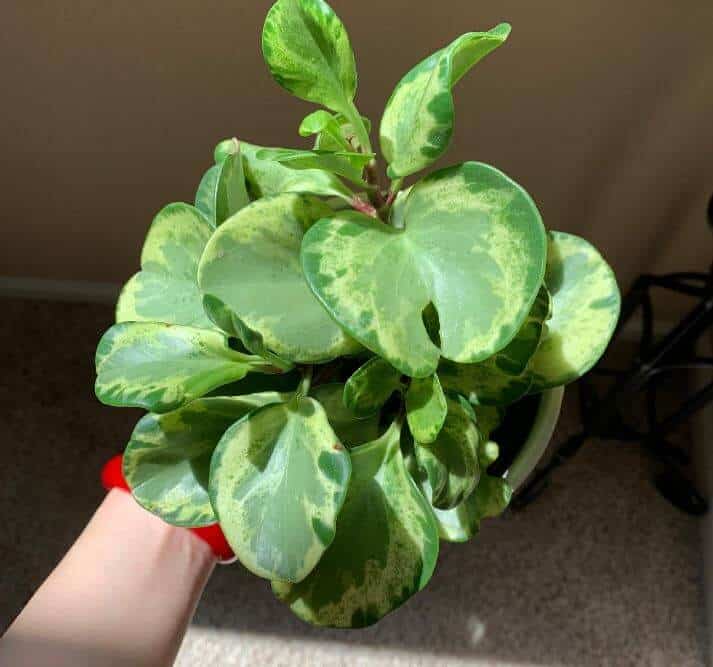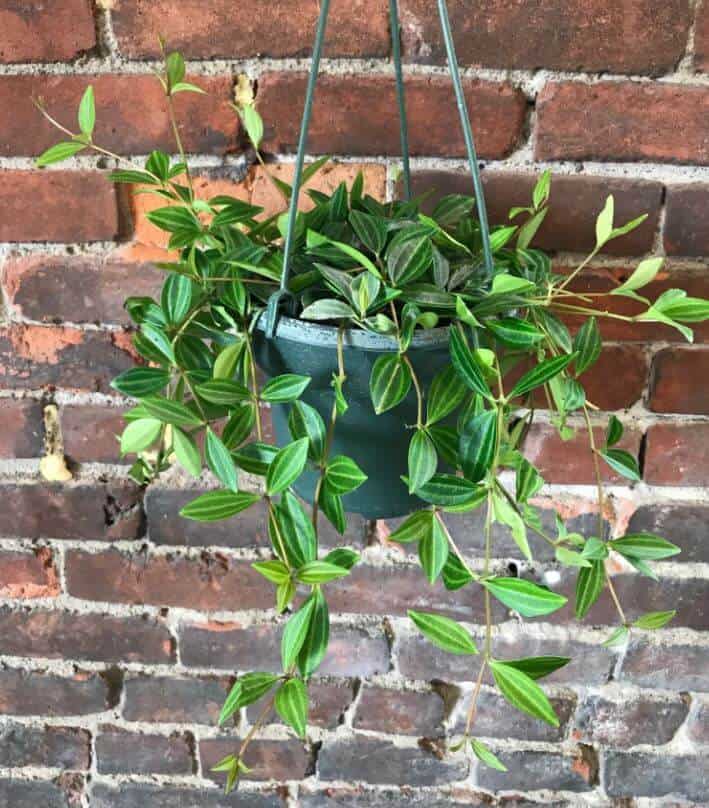Last Updated on January 6, 2023 by a Friendly Gardener
The funky frog plant belongs to the Peperomia genera and has the botanical name Peperomia angulata. It is also known as the radiator plant or beetle Peperomia.
This ornamental plant makes for a beautiful houseplant. The semi-succulent is visually appealing, pet-friendly, and adaptable to various conditions. They are ideal for novice plant growers.
The funky frog plant sports intricately patterned leaves, tolerates neglect well, and stays relatively small, allowing you to place it anywhere in your indoor space.
This article will cover all the details on how to take care of the Peperomia angulata or the funky frog plant.
Everything You Need to Know About Funky Frog Plant Care

Funky frog plants are easy to grow and require very little care to keep them alive. However, given proper care, they will add a pop of fun to your interior space with their aesthetic foliage.
Let’s explore the criteria for funky frog plant care.
Water
The plant is semi-succulent, meaning it can store water in its stems and leaves. Therefore, it does not have a high water requirement. Make sure you do not overwater it. Otherwise, the roots will become waterlogged and suffer from root rot.
Check the top two inches of the soil before you decide to water the plant. If the soil is moist, do not water it. If the soil is dry, you may water the plant. Keep watering sessions to once a week. Make sure excess water is able to drain out in case of overwatering.
Sunlight
This plant thrives on filtered light. Despite being an outdoor plant, it requires indirect light, especially during the summer months. In its natural element, the plant grows in shaded, tropical regions. If it is overexposed to direct sunlight, it will result in wilting.
If you are growing it outdoors, use other plants to shade it from the harsh rays of the sun or grow it under a net. If you are growing it indoors, place it in a partially shaded spot near the west or east-facing window.
Humidity
Since the plant is native to the tropical region, it requires a 40- 50% humidity level in order to thrive. It is ideally well-suited to be placed in terrariums or bathrooms.
You can ensure your plant gets a good level of humidity by occasionally misting it to raise the humidity, especially in arid weather. You can position the plant on some loose rocks or a pebble tray and mist these pebbles instead.
Keep the plant away from air conditioners and heaters. Get a humidifier to keep up the humidity levels during winter.
Soil

The funky frog plant, like the other varieties of its species, has an epiphytic element to it. In its natural habitat, it grows in rock crevices and on the surfaces of trees. It draws out nutrients from its surroundings.
It requires a well-draining potting mix that is nutrient-dense. It will give the sensitive root system sufficient breathability and allow excess water to drain away quickly without causing waterlogging. The organic matter will create a moist and humid environment for the plant.
A good potting mix contains peat moss and tree bark or mulch with pumice or perlite.
You can also improve the drainage process by adding a layer of gravel or pebbles before pouring in the soil mix. The plant prefers growing with debris around its roots but with sufficient aeration.
Temperature
The optimum growing temperature range for the funky frog is above 60°F. Though it is forgiving to varying temperatures, it does not do well in temperatures below 50°F. If the temperature drops, you will start to see leaves fall off.
Repotting

While the tropical plant adjusts to cramped living conditions due to its epiphytic aspect, it does not tolerate compacted soil. Unlike other indoor plants, it does not require repotting to larger pots. It has a relatively small root system that bonds well to the soil.
If you must repot, take care during the process as the plant’s stems are quite delicate and prone to breakage. You can minimize the risk by adding a layer of pebbles or gravel to the pot before layering it with a soil mix.
Repotting is best done during the months of winter. However, there is no obvious need for it since the plant does not grow large.
Fertilizer
The plant thrives with monthly fertilization sessions during its growing months. You can use a fertilizer that has been diluted over three times its normally prescribed dose. You can also opt for a diluted succulent fertilizer.
Do not fertilize the plant in winter. You will find plenty of organic alternatives if you do not like chemical fertilizers. You can also feed organic manure to the top layer of the soil once a month.
Propagation
Root-forming stem nodes and leaf cutting are the quickest and easiest ways of propagating a funky frog plant.
Simply snip some healthy leaves from the plant. Make sure there is an inch of petiole or stalk with the leaf.
Let the tip of each leaf dry before placing them four inches apart in a moist soil mix. Press the stalk firmly into the soil and place the container in a partially-shaded area. Make sure there are no drafts there. Mist the soil every two days. Do not wet the soil to prevent rot.
Soon, you will notice new shoots springing from the leaf base.
The alternate method of propagation is to use a health stem with nodes. Put this cutting in water and wait for it to root. Once it has sprouted roots, you can place it in a separate potting mix. Keep the soil moist and allow the roots to firmly make themselves at home.
The Bottom Line

Peperomia angulata plants grow slowly and are ideally planted in hanging baskets. They work just about in any corner of your home, as long as they are well cared for.
The fuss-free plant requires minimal water and needs access to filtered, indirect light. Keep it away from drafts and in humid conditions to allow healthy growth.
Even if you make a misstep with the funky frog plant, it is quite forgiving and will bounce back to its aesthetic glory once proper care is bestowed upon it.

